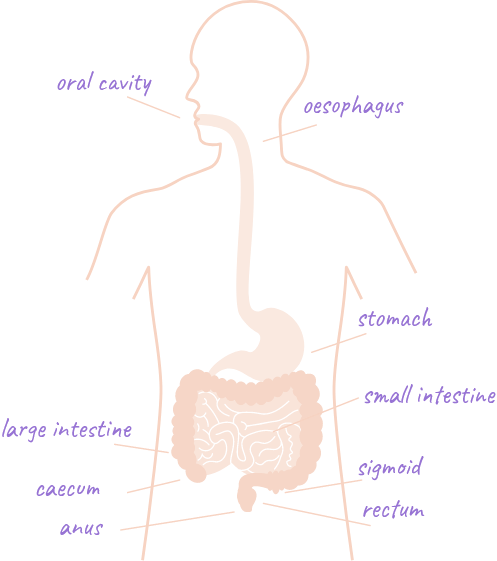
Gastrointestinal system
The small intestine is 5-6 m long and consists of the duodenum, jejunum and ileum. The small intestine is characterised by the presence of circular folds and intestinal villi embedded in the mucosa, which significantly increase the resorptive surface (absorption surface).
The small intestine is the part of the gastrointestinal system where the final breakdown of food takes place: the digestion of sugars to glucose or fructose, fats to glycerol, proteins to amino acids. From this section of the intestine, simple sugars and amino acids are absorbed into the blood, and fatty acids into the lymph.
The large intestine consists of a part called the caecum, beginning below the junction between the small and large intestine, where the appendix is located, hanging into the lesser pelvis. Going upwards from the right ilium body, the caecum passes into the next part of the large intestine, i.e. the colon. We distinguish three parts of the colon.
The first is called the ascending colon and it joins the transverse colon under the right costal arch. In the left subcostal region, in the vicinity of the spleen, the transverse colon joins the descending colon at the left colon flexure and heads downwards – on the left ilium body, it joins the sigmoid which goes into the pelvis and ends with the rectum. The final part of the rectum is the anus with the sphincter. The anus is the final section of the digestive tract.
Morphologically, the large intestine is characterised by the presence of the haustra, three taenia coli and omental appendices. The absorption of water and other substances takes place in the large intestine, which causes a significant concentration of the intestinal content. Fermentation processes take place here. The concentrated content is formed into faeces, which is excreted by the anus during defecation.